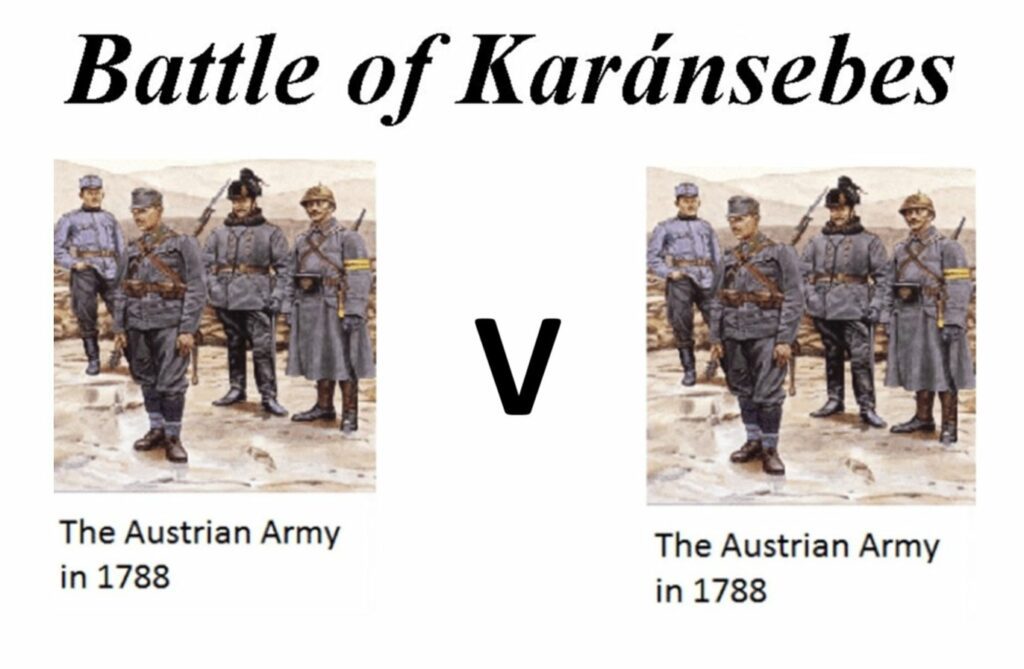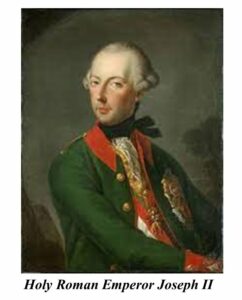
Legend has it that at the Battle of Karánsebes in 1788, which took place during in the Austro–Turkish War of 1787 – 91, the Austrian army fought itself and killed over 10,000 of their own soldiers, before the opposition arrived!
How could this happen?
Well, this was a campaign during the Austrian war with Turkey, which was happening at the same time as the Russo-Turkish war. In fact, Austria were only involved because of an alliance they had with Russia and they didn’t want to offend them by not supporting them. Actually, in the end they benefited by the war by expelling the Turks from Croatia.
The Battle of Karánsebes was part of Austria’s plan to gain control of the Danube River. 100,000 Austrian troops had set up camp near Karánsebes, a village that is today in Romania.
Well, it was down to drink!
They sent out scouts to see if they could find the Turks. They couldn’t, however, they did find some gypsies selling alcohol. Fatal, they bought the lot! Then once back at camp, guess what? Well, as they thought it was the night before a big battle, whatever else would you do? They started drinking!
As they drunk more, they got noisier, then other soldiers wanted to join in. The scouts weren’t happy with this, they didn’t want to share their drink with others, so as often happens on these occasions, a fight broke out. The noise this created attracted more soldiers, who also wanted some of the drink. This led to a few disputes and then, suddenly shots rang out, someone said the Turks had arrived, which, of course, they hadn’t.
 Chaos ensued:
Chaos ensued:
- All these drunken soldiers rushed off to charge the enemy, more shots were fired.
- Soldiers everywhere were killing everyone they could.
- Then the cavalry ran through the camps.
- An artillery commander thought that it was a cavalry charge by the Turkish army and ordered the artillery to fire.
- Eventually the entire camp was awake and immediately assumed it was the enemy and started firing at every shadow.
- They imagined Turks were everywhere; in fact, they were shooting fellow Austrian soldiers!
- It was such chaos that even the Holy Roman Emperor Joseph II himself was pushed off his horse into a small creek!
It was mayhem.
However, it does lead to the question of why didn’t they know they were all on the same side?
This is interesting, you see in those days the Austrian Army was a mixture of several different nationalities and to make matters worse they all spoke different languages, such as German, Hungarian, Polish, and Czechoslovakian and therefore didn’t understand each other.
This meant that in all the confusion the troops and their officers didn’t understand one another, for example, some German officers tried to stop those fleeing by shouting “Halt.” The soldiers who did not speak German thought they were Turks shouting Allah as their battle cry, so the fighting went on.
It was basically a disaster waiting to happen, which in daylight with everyone wearing their tunics would not have happened, but most were fighting in their nightshirts!
The Result
Therefore, when the Turks eventually arrived, two days later, they came across a field with over 10,000 dead or wounded Austrian soldiers but no army!
The result was that a confused Turkish army took Karánsebes with no casualties and no battle!
But, it is called a legend as the Austrians say it didn’t happen, well, they would, wouldn’t they?
However, then it was mysteriously added into the Austrian army records in 1840.
So did it happen or not?
Isn’t history sometimes just a little bit mad?
10 Questions to discuss:
- Historical Evidence: Despite the blog’s presentation as a “legend,” is there any concrete historical evidence or documentation supporting the actual occurrence of the Battle of Karánsebes, beyond its inclusion in later records?
- Alternative Narratives: Do Austrian or Turkish military records offer different accounts of the events surrounding Karánsebes, contradicting or clarifying the “friendly fire” narrative?
- Plausibility: Considering the logistical challenges, communication barriers, and lack of discipline described, how realistic is the scenario of an entire army turning against itself in such a large-scale manner?
- Motivation and Morale: Were there any underlying factors besides alcohol that contributed to the soldiers’ low morale or lack of discipline in the camp, potentially making them more susceptible to panic and confusion?
- Consequences and Cover-up: If the battle indeed happened, how did the Austrian high command respond? Were there official inquiries, disciplinary actions, or attempts to suppress the event from public knowledge?
- Impact on Warfare: Did the Karánsebes incident, regardless of its truth, lead to any changes in military tactics, communication protocols, or troop management within the Austrian army or other European forces?
- Psychological Factors: Could the incident be interpreted as a case of mass hysteria or collective panic triggered by sensory overload and miscommunication in a high-pressure environment?
- Cultural Contexts: How did the cultural and linguistic diversity within the Austrian army contribute to the alleged communication breakdown and confusion during the event?
- Humor and Tragedy: How does the portrayal of the battle as a comedic absurdity due to drunkenness potentially overshadow the potential tragedy of friendly fire and loss of life?
- Importance of Accuracy: Considering the possibility of fabrication, why is it important to critically examine historical narratives, even seemingly humorous ones, to distinguish between myth and reality?
These questions encourage you to think critically about the historical veracity of the story, delve into its potential causes and consequences, and understand the broader context of warfare, cultural diversity, and communication in the 18th century.
For more on this chaotic event:
© Tony Dalton


 Chaos ensued:
Chaos ensued: